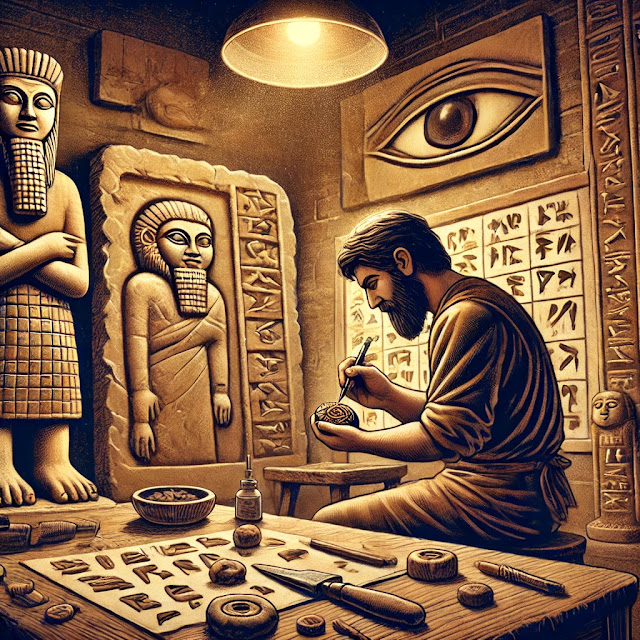Etchings of Eternity: The Story of Mesopotamian Artistry, Symbols, and Sacred Seals
Our story begins in a quiet corner of ancient Mesopotamia, within the humble workshop of an artisan. Here, under the soft glow of an oil lamp, a skilled craftsman works intently on a small **cylinder seal**, his hands weathered but deft. This seal isn’t just a tool—it’s a story, a personal emblem, a mark that will secure one’s identity in the eyes of others. Every press into soft clay will record the life, title, and heritage of the person who owns it, almost like a whisper of their soul left in each impression.
As he carves, the artist reflects on his work. The patterns and symbols he’s etching—lines weaving into spirals, animals intertwined with gods—are not merely decorative. Each mark connects to beliefs, myths, and powers beyond his own. The bull he’s carved represents strength and protection, revered by the people as a divine beast that safeguards their harvests and prosperity. The crescent moon he has added speaks to Nanna, the moon god, a quiet guide through the dark nights and a symbol of rhythm and continuity in their lives.
To his community, these cylinder seals, clay tablets, and statues are talismans of a world they cannot see but feel deeply connected to—a divine plane where gods and humans meet. Each piece of art carries a purpose and a story: of kings who command, scribes who record, and farmers who pray for fertile lands. The artist feels his heart swell with pride, knowing his work isn’t just for his time but will carry a story far beyond it.
Finally, he puts down his carving tool, watching the shadows play across his completed seal. Through his hands, the symbols have become a timeless script, a connection for future generations to witness and interpret, to understand the heart of Mesopotamian beliefs. For him, this art is a bridge between the earthly and the divine—a responsibility to give form to the intangible and whisper stories that endure.
Whispers of Color


No comments:
Post a Comment